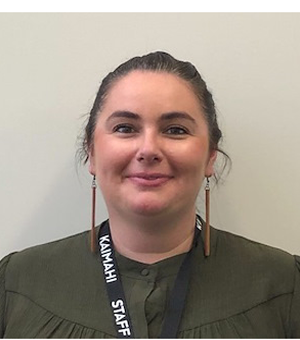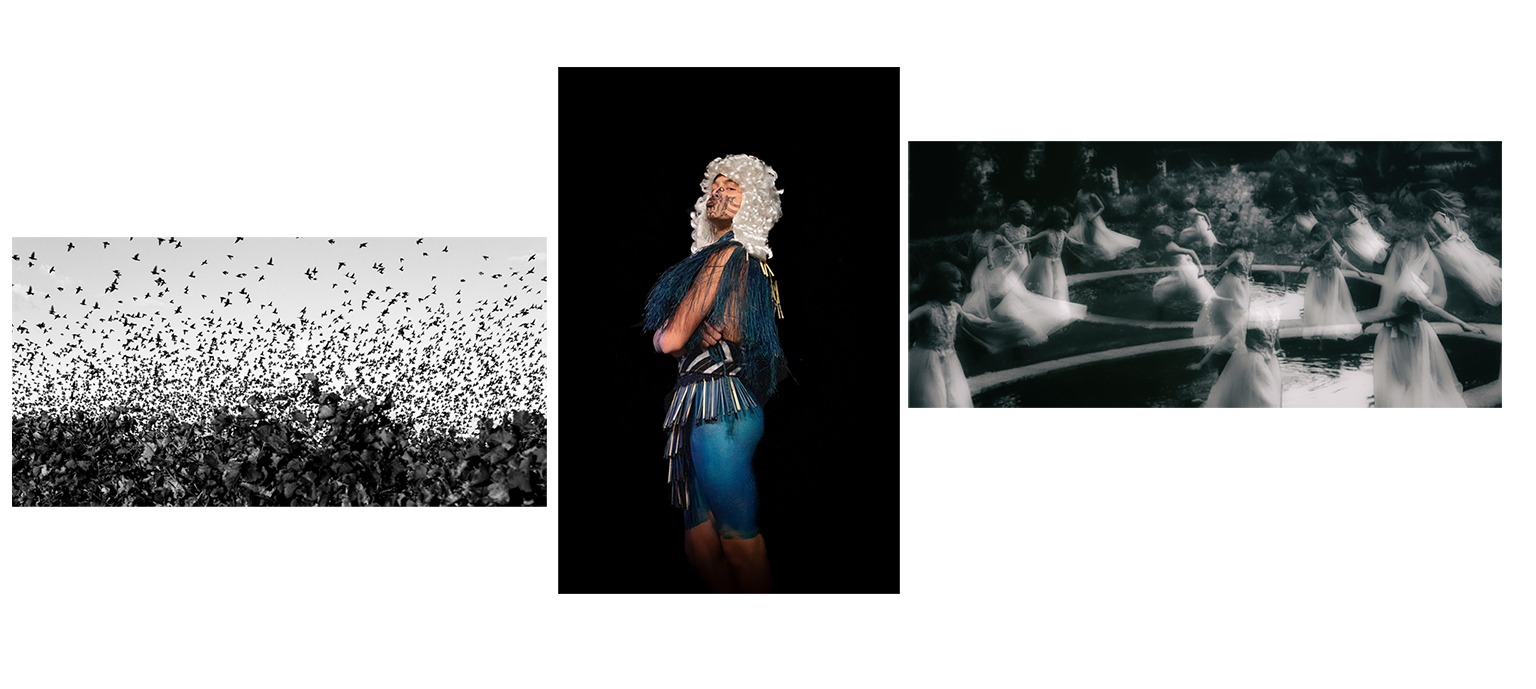Q & A with Papakāinga Toolkit Project Lead – Rachelle Johnston
 |
It is people who bring work programmes to life, who show up every day to collaborate and address the challenges and opportunities that face us, and to build better for their community and country. We are honoured to work with many amazing people as part of the WRLC work programme. A work programme of this scale and diversity involves a large network of skilled individuals, who deserve recognition for their contribution to the region and beyond. This month we interviewed Rachelle Johnston, Senior Analyst at Te Puni Kokiri. Rachelle is the Project Lead for the Pathways to Papakāinga Project |
- Please introduce yourself
Nō te whenua o Kotimana ōku tūpuna
Ko te whānau McGregor tetahi o ōku hapū
Ko Voice te ingoa tūpuna.
I haere mai tāku tūpuna tuarua ki te Waipounamu
I te tau kotahi mano, waru rua, whā tekau mā runga i te kaipuke o Sir William Eyre.
I noho ia ki Tuatapere.
Nō Te Waipounamu ōku mātua.
Ko Rachelle taku ingoa.
He kaitohu matua ahau, Te Puni Kōkiri. Kei Whanganui toku tari.
Tēnā koutou, tena koutou, tena koutou.
Kia ora, my name is Rachelle Johnston and I whakapapa back to the mighty clan Gregor (more commonly as McGregor) in the Highlands of Scotland.
My ancestors arrived in Aotearoa in the 1840s on the Sir William Eyre ship, settling in the deep south of Tuatapere/Gore. My father still has a rolling Scottish/southland accent which I did not inherit thanks to being born and growing up in Wellington.
At the ripe age of 13 I decided I would be a town planner having completed a planning exercise in 4th form geography. I graduated from Massey University on my birthday – the video of my graduation has a distinct “happy birthday” being yelled as I am being capped. You cannot live in the Manawatu without meeting your share of soldiers, and I met mine, eventually marrying him and having two sons. We are now settled in rural Manawatu, and when I am not supporting my boys (too) many extra curricular activities, I escape into a world of composite photography and highland dancing.
- What is your role at TPK?
I have the absolute pleasure of working at Te Puni Kōkiri as a Senior Advisor in the Housing Team. I think I have the best job in the world – I get to help whānau fulfil their dreams and aspirations building forever homes in some of the most beautiful parts of Aotearoa. The Housing Team covers a few work programmes: Supporting whānau with developing papakāinga on whenua Māori, supporting whānau with critical emergency housing repairs on homes owned by Māori, supporting financial literacy with Te Ara Ahunga Ora, providing support and advocacy to other agencies to remove obstacles to the development of housing for Māori.
- What’s the WRLC Papakāinga Toolkit project about?
He ara ki te kainga (the pathway to home) seeks to provide whānau Māori with the steppingstones and specific information to assist them in achieving papakāinga developments on their whenua. Whilst the project itself is not designed to increase home ownership, nor will it guarantee home ownership, it provides a holistic development framework and pathway for whānau. Its Māori specific as whenua Māori has unique challenges for development that need to be navigated that owners of general land don’t have.
The toolkit will provide whānau with guidance as to how they can develop papakāinga from establishing a shared vision, establishing governance structures, utilising existing whānau skills and talents, through to knowing their whenua from shared histories and experiences to technical expert knowledge. The toolkit provides a simple explanation as to what is a surveyor (among other professions) and what this profession does to assist in the papakāinga development, why you might need them and how to find and engage the professional. There are many things whānau can do themselves, or hold the knowledge of, and so the toolkit seeks to draw this knowledge out for the entire whānau to hold. The toolkit then guides whānau to regulatory agencies and how to best work with them, the questions to ask, and how to find support for those regulatory processes.
- What are the most difficult challenges you’re facing? Whether in this project, your work in Central Government, or in general?
Project: For this project there is A LOT of information to try and communicate simply – and we’re not all readers, or visual learners. It is really important to me that the toolkit is accessible in different formats for all styles of learning. Furthermore, I would really love the toolkit to be a foundation stone for marae or rūnanga to have a dedicated housing person who can assist whānau through hui and wananga with the toolkit as a resource, this will encourage whānau to reconnect with their marae or rūnanga and allow whānau to support whānau through the development phase – collective knowledge is power. The challenge is that rūnanga and marae are already doing so much with little resources, so to ask them to pick up one more kaupapa is a lot.
In general: I am tauiwi, representing a crown entity, so it is really important that I get a te ao Māori lens over the project. Working at TPK I have the support of my colleagues in the Whanganui tari, and a huge network of professional support to draw professional help from. Working with Ngā Hapu o Otaki has and will be of huge benefit to me personally, professionally and for this project. The wahine toa I am blessed to be working with provide a total holistic support to this project and me, and ensure that it continues to move in an appropriate manner, responding specifically to their community needs. It is really important to do what you say you are going to do – be humble and listen, learn, adapt, pivot, be agile and be prepared to be told, not asked because sometimes others know better!
- If everything was working perfectly, who would be doing what?
I feel like that is a loaded question! If everything was working perfectly we would have no homelessness in this great country… and I am a deep thinker, always learning, curious by nature so I don’t really know the answer to ‘who would be doing what’. In a utopian scenario I would probably remove the term and its meaning ‘property/ownership’. Living with a foot in two (sometimes three or four) worlds, the people I have met all want the same thing for their whānau/families – and somewhere along the way a bunch of social constructs have come along and side tracked us from that shared aspiration of safety, happiness and security for our loved ones. When I have boiled it down – property and ownership as constructs appear to usurp those aspirations and have directed our energy and attention away in pursuit of this idea that property and ownership will provide safety, happiness and security.. and it does.. but quite selfishly. So I guess if everything was working perfectly we wouldn’t be selfish, and covet property and ownership.

Images above: left: Rush Hour – image taken in Hawkes Bay at dusk within a vineyard, centre: When Cherubs play image taken at Greenhaugh Gardens Manawatu, little girls run around a pond, multiple exposures on top of each other, right: Mr Speaker – image taken at Te hui Ahuri o te Tapere nui o Whatonga in 2021. A day of kapa haka was absolutely thrilling!
- What motivates you?
I am very curious by nature, though I have a VERY short attention span. I’m happy with imperfection and often start a hobby only to master it sufficiently enough for my brain to say, “ok you’ve got enough, time to move on”.
So you’ll often find me browsing unusual podcasts, late night contemplating things like, ‘what would aliens think if they arrived over the top of a rugby stadium and saw a game mid scrum’, or behind my camera and photoshop creating other worlds from my mind. My children have a third sibling named Darryl, who is treated like another child, but is a plastic skeleton. I definitely am motivated by optimism and the possibility.
- What’s something you think no one would guess about you
Two things: I am an introvert, and I started Highland dancing aged 38. Bagpipes make my soul sing and bring out something fierce in my blood that makes me want to dance.
- Holiday highlight?
Easy peasy – for Christmas I got a sewing machine. I’ve not sewn since intermediate, so am now teaching myself . I purchased a pattern – of course, not a beginners pattern, and have proceeded to make a skirt, blouse and jacket. They are beautifully flawed but surprisingly good for a first attempt. I’m looking forward to my next sewing project!
- What do you hope to see more of in 2023 – in work / in Aotearoa?
In 2023 I would hope to see:
- The rest of the show 1923 – I’m very caught up in the Yellowstone story line!
- Seeing where my photography moves to next – I’ve started dreaming of prints and exhibitions.
- Dance more.
For work and Aotearoa
- The cost of living coming back down – too many of our community are in dire straits, and if you’re feeling the pinch, you can imagine its a lot worse for those who don’t have as much as you have.
- Learning to love our cultural differences and start recognising our similarities – these are our strengths and we shouldn’t feel threatened by our differences. Sink below the surface of those differences you start to see a lot of similarities!
- Start building communities – we’ve talked to long about needing to do it, now is the time to actually DO IT.
Read more about the Papakāinga Toolkit Project – He ara ki te kainga (the pathway to home) here.

